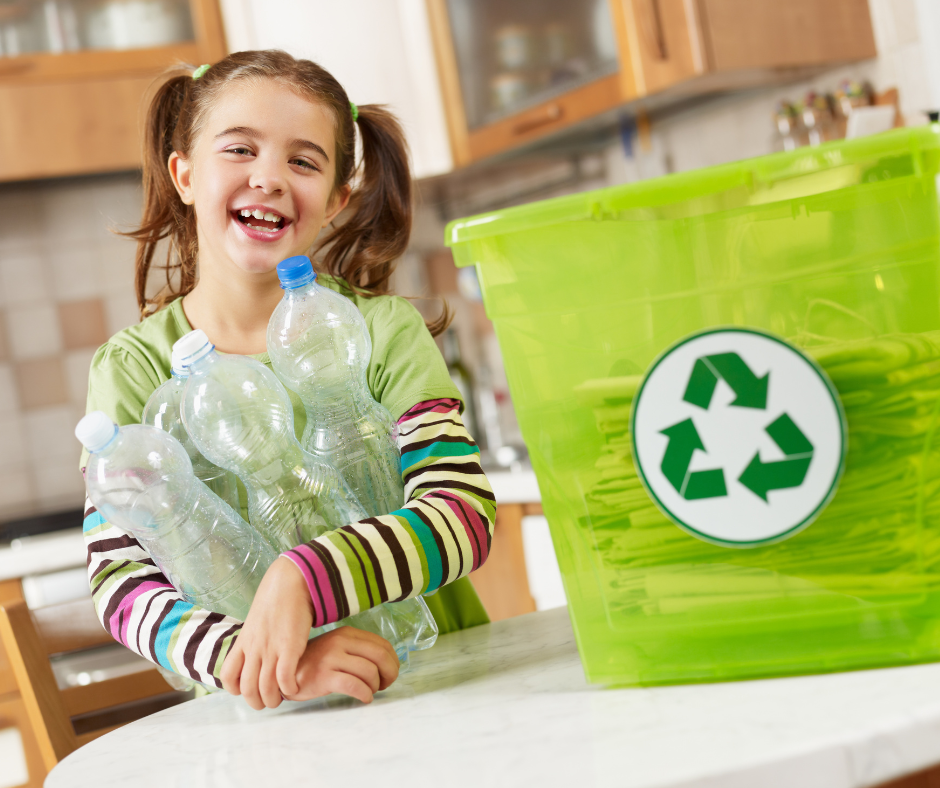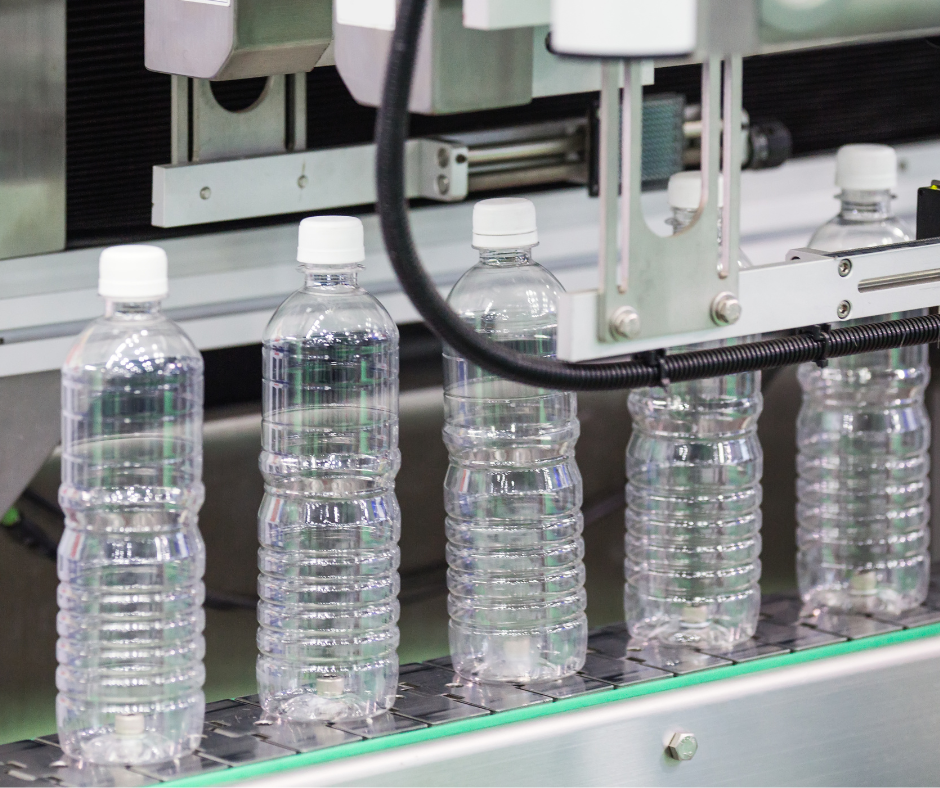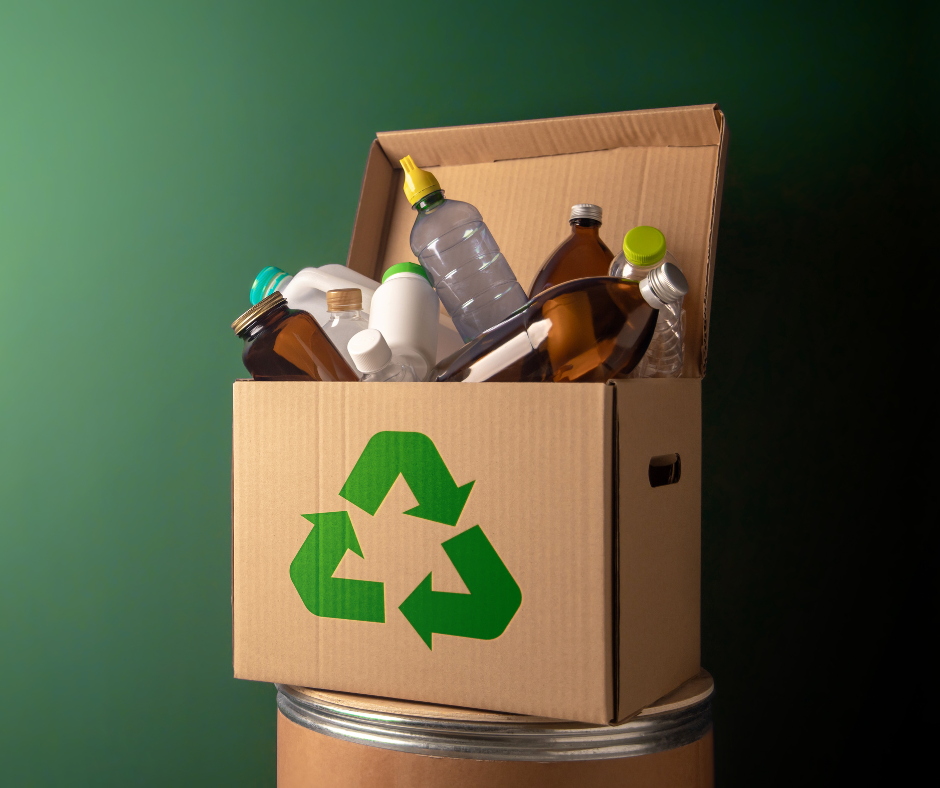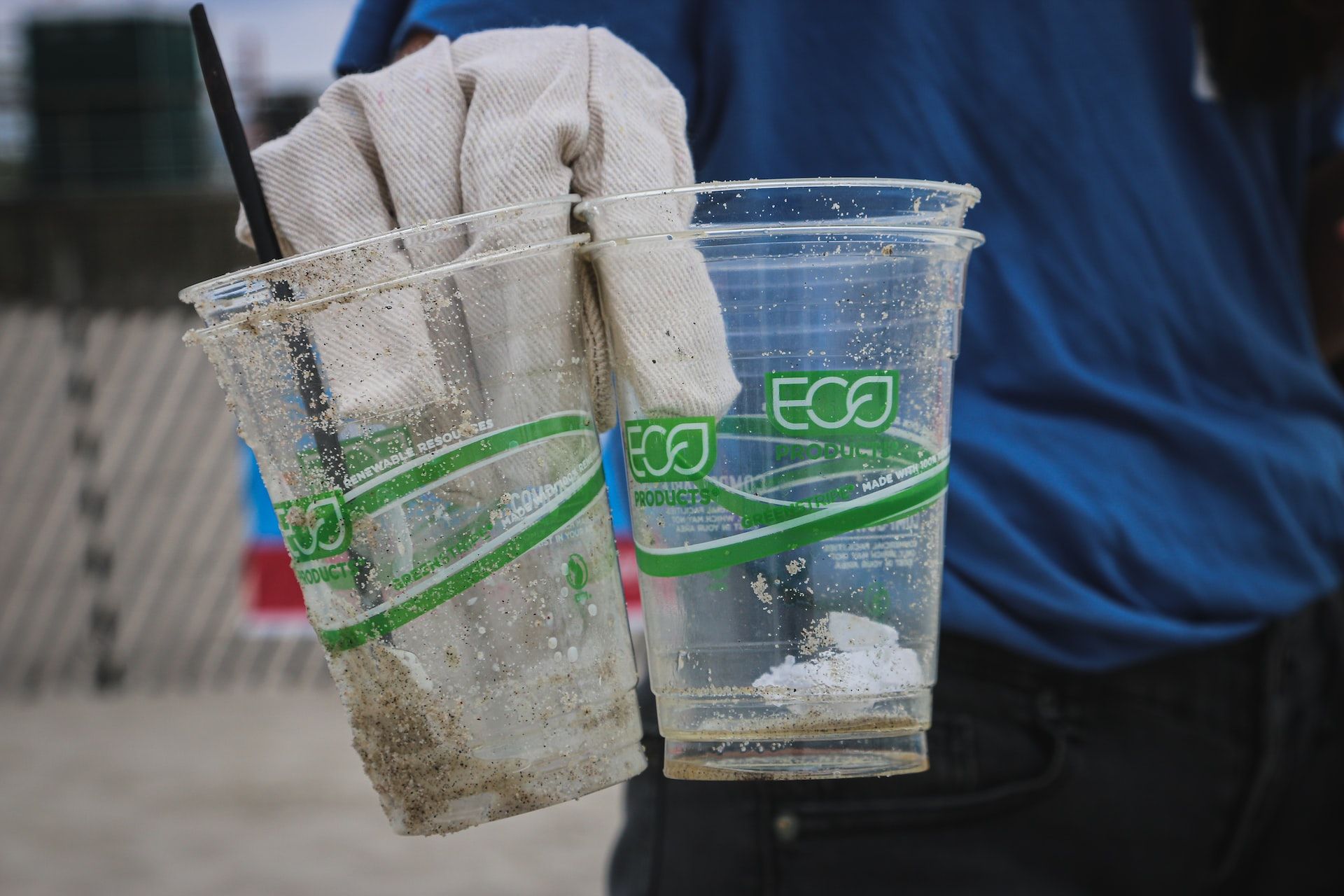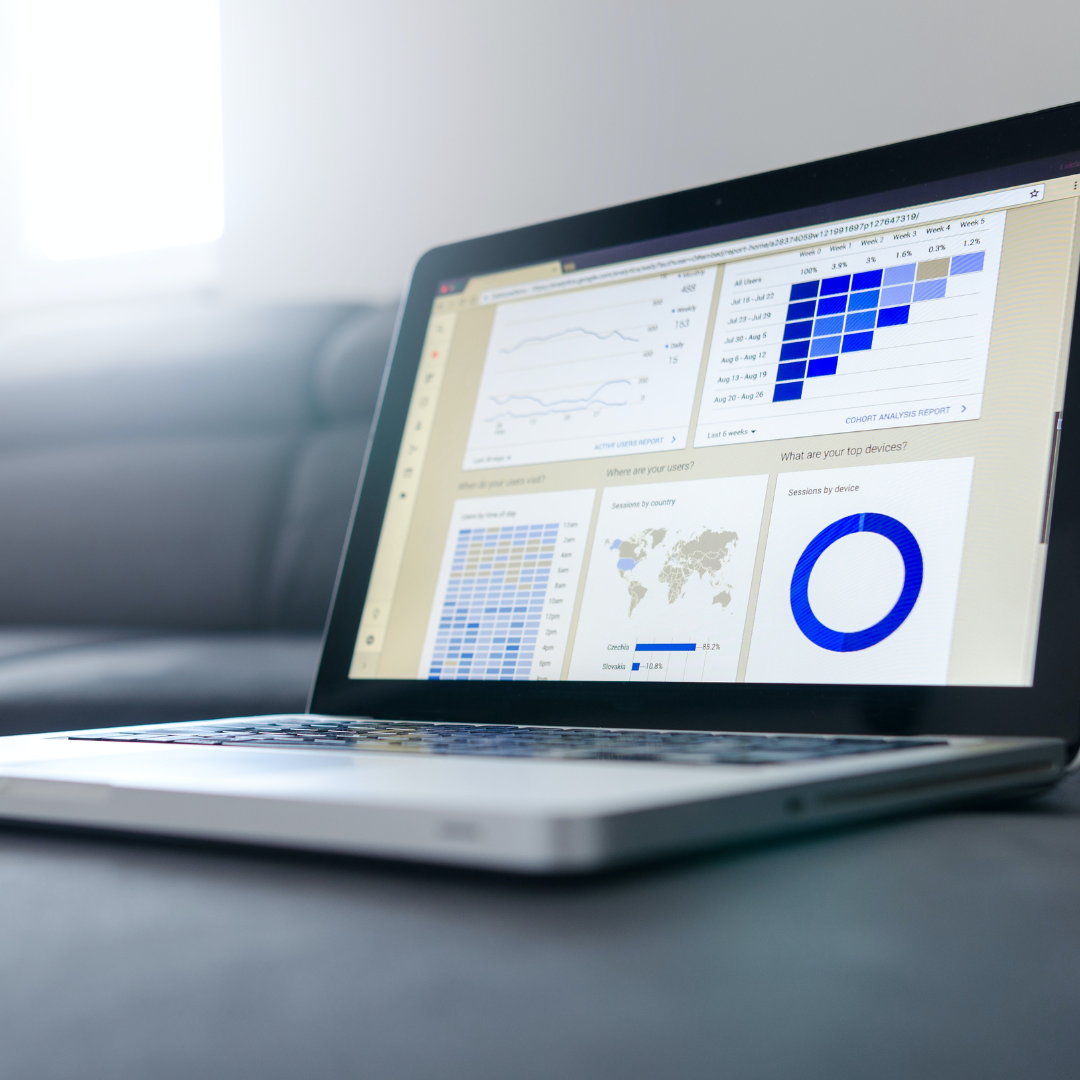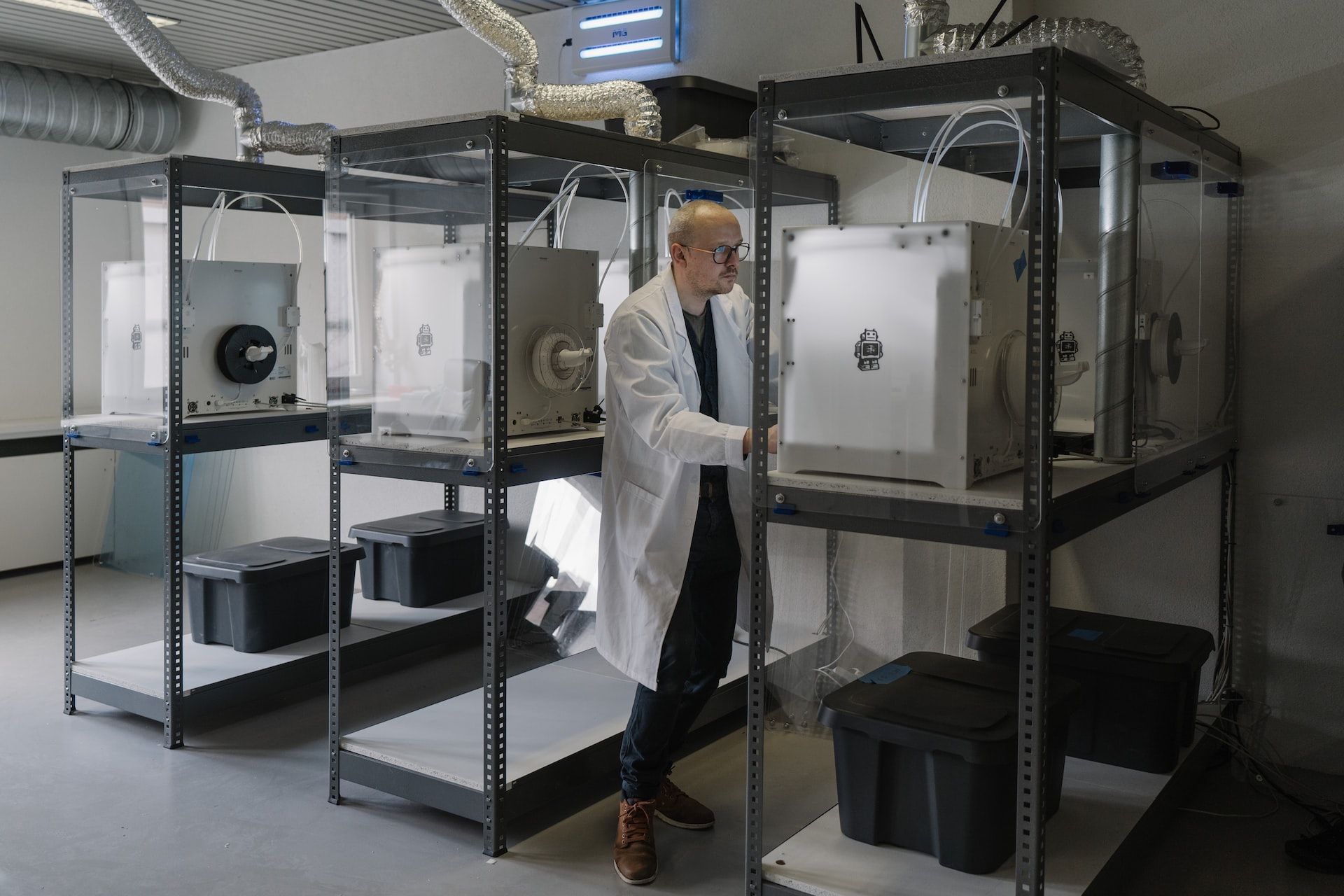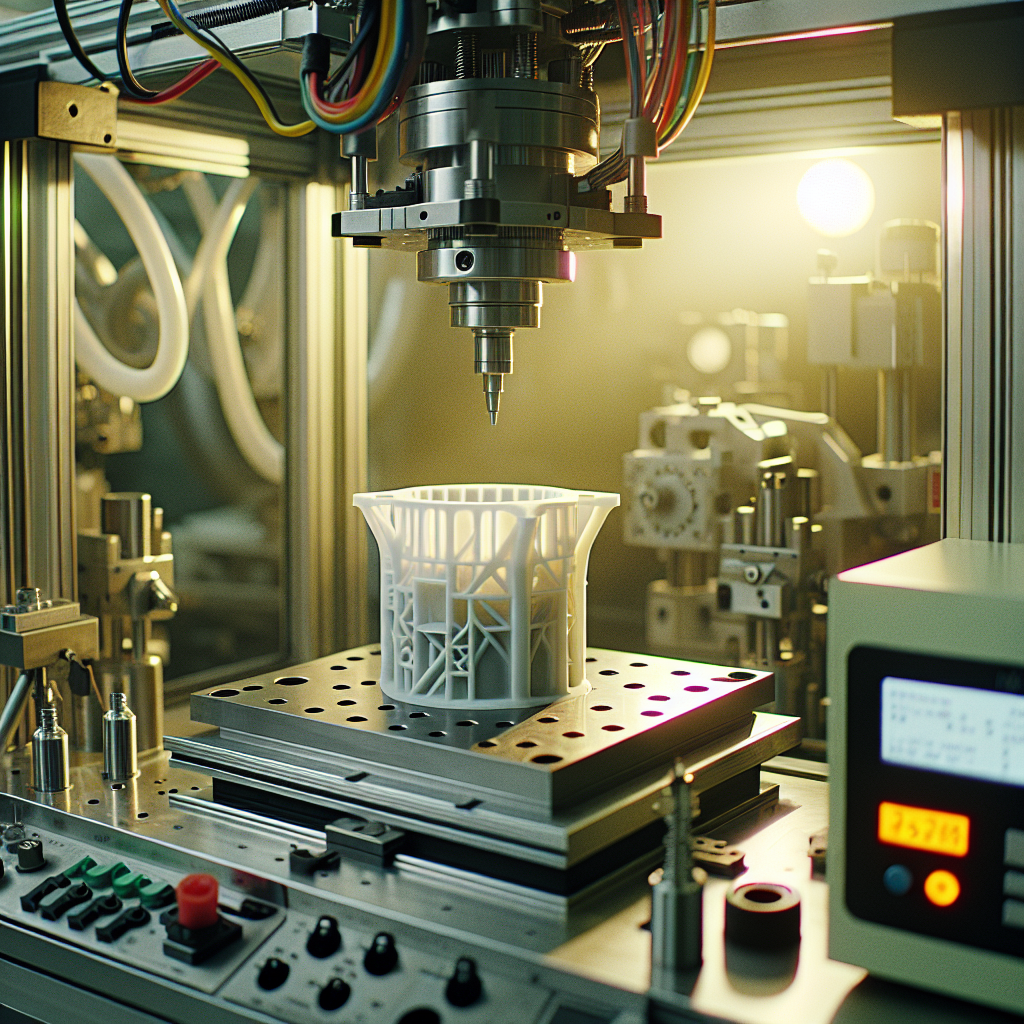The plastics industry is one of the most rapidly growing industries in the world. This is largely due to advances in technology that have allowed firms to create products that are both more durable and lighter in weight.
However, with this growth comes an increased demand for environmentally friendly materials, which has led to developments in the plastic manufacturing sector.
While plastic has many benefits, including its durability and low cost, it also presents a significant environmental challenge. Plastic waste is a major contributor to pollution and poses a threat to wildlife and ecosystems.
And therefore, there is an urgent need for innovation in plastics manufacturing to create more sustainable and eco-friendly solutions.
In this article, we will take a look at some of the most important innovations in plastics manufacturing and their impact on the industry. Each of these innovations has the potential to revolutionize the way we use plastic and reduce our environmental impact.
- Importance of Plastics in Modern Society
- New Production Methods
- Innovations in Plastics Manufacturing
- Wrapping Up
- How Deskera Can Assist You?
Importance of Plastics in Modern Society
Plastics play a significant role in modern society and have become an integral part of our daily lives. Here are some of the reasons why plastics are important:
Versatility: Plastics are incredibly versatile and can be used to make a wide range of products, from food packaging to medical equipment. They can be molded into any shape and can be made to be rigid or flexible.
Durability: Plastics are incredibly durable and can withstand harsh environments, making them ideal for use in a wide range of applications.
Cost-effective: Plastics are generally less expensive to produce than many other materials, making them a cost-effective option for a wide range of products.
Lightweight: Plastics are lightweight, which makes them ideal for use in products where weight is a concern, such as in the automotive industry or in aerospace applications.
Safety: Plastics can be made to be safe for use in a wide range of applications, from food packaging to medical implants.
Energy Efficiency: Plastics can be made to be energy-efficient, such as in the construction of energy-efficient homes.
Recycling: Plastics can be recycled, which reduces waste and helps to conserve resources.
New Production Methods
There are a number of innovative production methods that are changing the way plastics are made. Here are some of the new production methods in detail:
3D Printing:
3D printing is a process where a three-dimensional object is created by adding layers of material on top of each other. In the case of plastics, a 3D printer uses a special plastic filament to build up the object layer by layer.
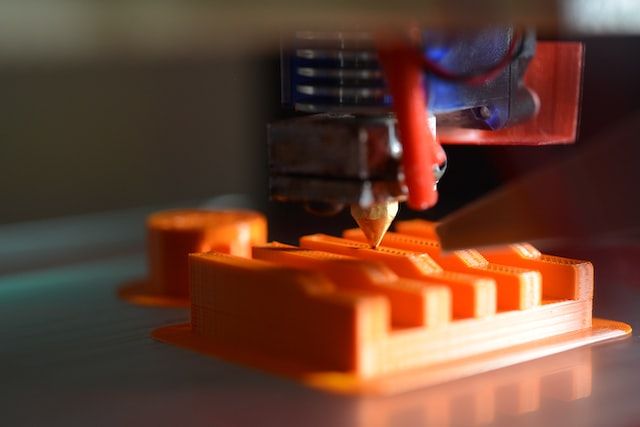
This technology is revolutionizing many industries, including plastics manufacturing, by allowing for the creation of complex shapes and designs that would be difficult or impossible to produce with traditional methods.
Moreover, it is also more efficient in terms of material usage as it only uses the exact amount of plastic needed to create the product, reducing waste and minimizing the impact on the environment.
Chemical Recycling:
While traditional recycling methods can be limited by the quality of the plastic waste, chemical recycling allows for the breakdown of even the most complex plastics into their basic building blocks.
This involves breaking down the plastic at the molecular level and separating it into its individual components. The resulting materials can then be used to produce new plastics. This process has the potential to significantly reduce the amount of plastic waste in landfills and oceans and reduce the need for virgin plastic production.
Additive Manufacturing:
Additive manufacturing, also known as 3D printing, is a process of creating three-dimensional objects by adding successive layers of material. This technology has revolutionized the manufacturing industry. It includes the production of plastics, by allowing for the creation of complex shapes and designs that would be difficult or impossible to produce using traditional manufacturing methods.
In additive manufacturing, a digital 3D model is created using computer-aided design (CAD) software. This digital model is then sliced into thin layers, and the printer uses this information to create the physical object layer by layer.
There are several types of 3D printing technologies, each with its own unique advantages and applications. Some of the most common types of 3D printing technologies used in plastics manufacturing include:
Fused Deposition Modeling (FDM): FDM is one of the most common types of 3D printing technologies used in plastics manufacturing. In FDM, a thermoplastic filament is melted and extruded through a nozzle, which deposits the material layer by layer to create the object.
Stereolithography (SLA): SLA uses a liquid resin that is cured by a laser or other light source to create the object. The resin is cured layer by layer until the object is complete.
Selective Laser Sintering (SLS): SLS uses a high-powered laser to fuse powdered plastic materials together layer by layer, creating a solid object.
Additive manufacturing offers several advantages over traditional manufacturing methods, including:
Design Flexibility: Additive manufacturing allows for the creation of complex shapes and designs that would be difficult or impossible to produce using traditional manufacturing methods.
Reduced waste: Additive manufacturing produces less waste than traditional manufacturing methods, as only the necessary material is used to create the object.
Customization: Additive manufacturing allows for customization and personalization of products, making it ideal for creating prototypes, small production runs, and unique products.
Cost-effectiveness: Additive manufacturing can be more cost-effective than traditional manufacturing methods for small production runs or custom products.
However, there are also some challenges associated with additive manufacturing, including:
Limited material selection: While the selection of materials for additive manufacturing is expanding, it is currently more limited than traditional manufacturing methods.
Slow production times: Additive manufacturing can be slower than traditional manufacturing methods, making it less suitable for high-volume production.
Quality control: Quality control can be more challenging in additive manufacturing, as defects can be difficult to detect in the layered structure of the object.
Eventually, additive manufacturing represents an important innovation in the plastics industry, offering a range of benefits and opportunities for customization, flexibility, and sustainability. As technology and materials continue to evolve, it is likely that additive manufacturing will become even more widely used and transformative in the manufacturing of plastic products.
High-Pressure Injection Molding:
This is a process where plastic is injected into a mold under high pressure. The plastic is melted in a machine and then injected into a mold that is designed to produce the desired shape.
The mold is cooled, and the plastic part is ejected. This process is commonly used for the mass production of plastic products as it is fast, efficient, and produces high-quality parts.
Continuous Extrusion:
This is a process where plastic is continuously extruded through a die to produce a long continuous shape, such as a tube or pipe. The plastic is melted and then pushed through a die under high pressure. The shape of the die determines the shape of the plastic product. This process is commonly used for the production of plastic pipes, tubing, and sheeting.
These new production methods are changing the way plastics are made, reducing waste and material usage, and opening up new possibilities for product design and customization. They are also helping to address the environmental concerns associated with traditional plastics manufacturing.
As these technologies continue to evolve, they will likely become even more efficient and sustainable, further reducing the environmental impact of plastics manufacturing.
Sustainable Manufacturing Processes:
Sustainable manufacturing processes are those that prioritize environmental and social sustainability, while also ensuring economic viability. These processes are designed to minimize waste and pollution, conserve resources, and promote social responsibility, while also meeting the needs of consumers and businesses.
There are several sustainable manufacturing processes that are commonly used in the plastics industry, including:
Life cycle assessment: Life cycle assessment (LCA) is a tool used to evaluate the environmental impact of a product or process from cradle to grave. This tool allows manufacturers to identify areas where they can reduce their environmental impact and improve their sustainability.
Energy efficiency: Improving energy efficiency is an important part of sustainable manufacturing. By reducing energy use and improving energy management, manufacturers can lower their carbon footprint and reduce their energy costs.
Waste reduction: Reducing waste is another key component of sustainable manufacturing. This can be achieved through waste reduction programs, recycling, and using recycled materials in production.
Lean manufacturing: Lean manufacturing is a process improvement methodology that focuses on reducing waste and increasing efficiency. This methodology is designed to minimize the use of resources and reduce the environmental impact of manufacturing processes.
Closed-loop manufacturing: Closed-loop manufacturing is a process that involves recycling and reusing materials and products to minimize waste and reduce the use of new resources. This process can help manufacturers achieve a more circular economy and reduce their environmental impact.
There are several benefits to using sustainable manufacturing processes, including:
Reduced environmental impact: Sustainable manufacturing processes can help reduce the environmental impact of production, minimizing waste and pollution, and conserving resources.
Cost savings: Sustainable manufacturing can help manufacturers reduce costs by improving energy efficiency, reducing waste, and promoting lean manufacturing practices.
Enhanced reputation: Sustainable manufacturing can help businesses build a positive reputation by demonstrating their commitment to social and environmental responsibility.
Improved employee satisfaction: Sustainable manufacturing can also help improve employee satisfaction by promoting a positive workplace culture and providing opportunities for professional development.
Overall, sustainable manufacturing processes are an important innovation in the plastics industry, helping to promote environmental and social sustainability while also supporting economic viability. As technology and manufacturing processes continue to evolve, it is likely that even more innovative and sustainable solutions will emerge, further reducing the environmental impact of plastic production and use.
Innovations in Plastics Manufacturing
Plastics manufacturing has undergone significant innovation in recent years, driven by advancements in technology and the increasing demand for sustainable and eco-friendly products. Here are some of the most notable innovations in plastics manufacturing:
Biodegradable Plastics
Biodegradable plastics are a type of plastic that can be broken down by natural processes into natural materials like water, carbon dioxide, and biomass. These plastics are designed to be more eco-friendly and reduce the environmental impact of traditional plastics that can take hundreds of years to decompose in landfills and oceans.
Biodegradable plastics can be made from a variety of renewable sources such as cornstarch, potato starch, and cellulose. These materials are used to create polymers, which can be processed and molded into a wide range of products, including food packaging, bags, and disposable cutlery.
There are two main types of biodegradable plastics: bio-based and petroleum-based. Bio-based plastics are made from renewable sources, while petroleum-based biodegradable plastics are made using a combination of petroleum and additives that help the plastic degrade.
The process of biodegradation involves microorganisms that consume the plastic and break it down into its basic components. These microorganisms are found naturally in the environment and can be found in soil, water, and composting facilities. The rate of biodegradation depends on various factors, such as temperature, moisture, and the amount and type of microorganisms present.
Biodegradable plastics have a number of benefits, including:
Reduced environmental impact: Biodegradable plastics reduce the amount of plastic waste in landfills and oceans and are less harmful to wildlife.
Renewable resources: Biodegradable plastics can be made from renewable resources, reducing the reliance on fossil fuels.
Versatility: Biodegradable plastics can be used to create a wide range of products, from food packaging to disposable cutlery.
Convenience: Biodegradable plastics offer the convenience and functionality of traditional plastics but with a reduced environmental impact.
However, biodegradable plastics also have some limitations. For example, they can be more expensive to produce than traditional plastics, and there are still some concerns about their durability and ability to withstand certain environmental conditions.
Overall, biodegradable plastics are a promising innovation in the plastics industry, providing a more sustainable and eco-friendlier alternative to traditional plastics. As technology continues to evolve, it is likely that even more innovative and sustainable solutions will emerge, further reducing the environmental impact of plastic production and use.
Recyclable Plastics
Recyclable plastics are a type of plastic that can be recycled and reused to make new products, reducing the amount of plastic waste that ends up in landfills and oceans. These plastics are designed to be recycled efficiently and effectively, helping to promote sustainability and reduce the environmental impact of plastic production and use.
Recyclable plastics can be made from a variety of materials, including polyethylene terephthalate (PET), high-density polyethylene (HDPE), and polypropylene (PP). These materials are commonly used to create a wide range of products, including bottles, containers, and packaging.
The recycling process for plastics involves several steps, including sorting, cleaning, shredding, and melting the plastic. The plastic is then formed into pellets, which can be used to create new products. The recycling process can be repeated multiple times, allowing the same plastic to be used and reused over and over again.
There are several benefits to using recyclable plastics, including:
Reduced environmental impact: Recycling plastics reduces the amount of plastic waste that ends up in landfills and oceans, helping to reduce the environmental impact of plastic production and use.
Resource conservation: Recycling plastics conserves resources by reducing the need for new plastic production, which requires the extraction of fossil fuels and other resources.
Energy savings: Recycling plastics saves energy by reducing the amount of energy needed to produce new plastic products.
Cost savings: Recycling plastics can be less expensive than producing new plastic products, reducing the cost of manufacturing and promoting economic sustainability.
However, there are some limitations to recyclable plastics. For example, not all plastics are recyclable, and the recycling process can be expensive and energy-intensive, depending on the type of plastic and the recycling technology used.
To maximize the benefits of recyclable plastics, it is important to design products with recyclability in mind, using materials and manufacturing processes that are compatible with recycling.
Additionally, consumers can help promote sustainability by properly sorting and disposing of plastic waste and supporting companies that prioritize recyclable and sustainable products.
Overall, recyclable plastics are an important innovation in the plastics industry, helping to promote sustainability and reduce the environmental impact of plastic production and use. As technology and recycling processes continue to evolve, it is likely that even more innovative and sustainable solutions will emerge, further reducing the environmental impact of plastic waste.
Smart Plastics
Smart plastics, also known as intelligent plastics or responsive polymers, are a type of plastic material that can respond to changes in their environment or user input. These materials are designed to have specific properties that allow them to change their shape, color, or other characteristics in response to external stimuli.
Smart plastics can be made from a variety of materials, including shape memory polymers (SMPs), self-healing polymers, and photoresponsive polymers. These materials can be used to create a wide range of products, including sensors, medical devices, and smart textiles.
Some examples of smart plastics and their properties include:
Shape memory polymers (SMPs): SMPs are materials that can change their shape in response to changes in temperature, light, or other stimuli. They can be used to create products that can change shape on demand, such as self-fitting braces or stents.
Self-healing polymers: Self-healing polymers are materials that can repair themselves when damaged, reducing the need for replacement or repair. They can be used to create products that are more durable and long-lasting, such as self-healing coatings or adhesives.
Photoresponsive polymers: Photoresponsive polymers are materials that can change their properties in response to light, such as changing color or stiffness. They can be used to create products that can respond to user input, such as color-changing clothing or light-sensitive lenses.
There are several benefits to using smart plastics, including:
Increased functionality: Smart plastics can add new functionality to products, making them more versatile and adaptable to different situations.
Improved efficiency: Smart plastics can improve efficiency by reducing the need for manual input or intervention, such as self-healing coatings that can repair themselves without human intervention.
Enhanced safety: Smart plastics can improve safety by providing real-time feedback or warnings, such as sensors that detect changes in temperature or pressure.
However, there are also some limitations to smart plastics. For example, they can be more expensive to produce than traditional plastics, and there may be concerns about their long-term durability and reliability.
Overall, smart plastics are a promising innovation in the plastics industry, offering new possibilities for product design and functionality. As technology continues to evolve, it is likely that even more innovative and sustainable solutions will emerge, further expanding the capabilities and applications of smart plastics.
Bio-Based Plastics
Bio-based plastics, also known as bioplastics, are a type of plastic made from renewable biomass sources such as plants, agricultural waste, and other organic materials. These plastics are often marketed as a more sustainable alternative to traditional petroleum-based plastics, as they are derived from renewable resources and have the potential to reduce the environmental impact of plastic production and use.
There are several types of bio-based plastics, each with their own unique properties and characteristics. Some of the most common types of bio-based plastics include:
PLA (polylactic acid): PLA is a bio-based plastic made from corn starch, sugarcane, or other renewable resources. It is often used in packaging and disposable products, such as food containers, cups, and cutlery.
PHA (polyhydroxyalkanoates): PHA is a bio-based plastic that is biodegradable and compostable. It is made from various microorganisms that can produce the plastic as a natural byproduct.
PBS (polybutylene succinate): PBS is a bio-based plastic that is commonly used in packaging and film applications. It is made from succinic acid, which is derived from renewable biomass sources such as corn and sugarcane.
Starch-based plastics: Starch-based plastics are made from starch, which is derived from renewable biomass sources such as corn, potatoes, and wheat. These plastics are often used in packaging and disposable products.
Cellulose-based plastics: Cellulose-based plastics are made from cellulose, which is derived from renewable biomass sources such as wood pulp and cotton. These plastics are often used in films and packaging applications.
While bio-based plastics offer several potential benefits, there are also some challenges associated with their production and use. Some of these challenges include:
Land use and resource competition: The production of bio-based plastics requires land and resources that could also be used for food production, leading to potential conflicts and competition.
Limited availability: Bio-based plastics are currently less widely available and more expensive than traditional plastics.
Recycling and biodegradability: Some types of bio-based plastics are not compatible with existing recycling systems, and may not biodegrade in the same way as traditional plastics.
Ultimately, bio-based plastics represent a promising innovation in the plastics industry, offering the potential to reduce the environmental impact of plastic production and use. As technology and production processes continue to evolve, it is likely that bio-based plastics will become even more widely available and cost-effective, further expanding their potential applications and benefits.
High-Performance Plastics
High-performance plastics are a class of plastic materials that offer superior mechanical, thermal, and chemical properties compared to traditional plastics. These materials are used in a wide range of industries, including aerospace, automotive, electronics, and medical devices, where high strength, durability, and resistance to extreme temperatures and harsh environments are required.
There are several types of high-performance plastics, each with its own unique properties and applications. Some of the most common types of high-performance plastics include:
Polyimides: Polyimides are a class of high-temperature-resistant polymers that can withstand temperatures up to 500°C without degrading. They are commonly used in electronics, aerospace, and automotive applications.
Polyether Ether Ketone (PEEK): PEEK is a thermoplastic material that is lightweight, strong, and heat-resistant. It has excellent chemical resistance and can withstand temperatures up to 250°C. PEEK is used in a variety of applications, including medical implants, aerospace components, and automotive parts.
Polysulfones: Polysulfones are a class of high-performance thermoplastics that offer excellent chemical resistance, high temperature resistance, and good mechanical properties. They are used in a range of applications, including automotive, aerospace, and medical devices.
Polyphenylene Oxide (PPO): PPO is a high-performance thermoplastic material that is lightweight, strong, and heat-resistant. It has excellent electrical properties and can be easily molded into complex shapes. PPO is used in a range of applications, including automotive, electronics, and appliances.
Polyetherimide (PEI): PEI is a high-performance thermoplastic material that is known for its high strength, heat resistance, and dimensional stability. It is commonly used in aerospace, automotive, and medical applications.
High-performance plastics offer several advantages over traditional plastics, including:
High strength and durability: High-performance plastics offer superior mechanical properties, including high strength and durability, making them ideal for applications where traditional plastics would fail.
Resistance to extreme temperatures: High-performance plastics can withstand extreme temperatures, making them suitable for use in harsh environments.
Chemical resistance: High-performance plastics offer excellent chemical resistance, making them ideal for use in corrosive environments.
Design flexibility: High-performance plastics can be easily molded into complex shapes, offering design flexibility and customization options.
However, high-performance plastics also have some limitations, including:
Higher cost: High-performance plastics are generally more expensive than traditional plastics due to their superior properties and specialized manufacturing processes.
Limited availability: Some types of high-performance plastics may have limited availability, making it more difficult to source materials.
Ultimately, high-performance plastics are an important innovation in the plastics industry, offering a range of benefits and opportunities for improved performance, durability, and resistance to extreme environments. As new materials and technologies continue to emerge, it is likely that high-performance plastics will become even more widely used and transformative in the manufacturing of plastic products.
Recycling Technology
Recycling technology refers to the methods and processes used to recycle materials, particularly plastics, in a way that reduces waste and promotes sustainability.
The goal of recycling technology is to create a circular economy where materials are reused and repurposed instead of being discarded in landfills or incinerated.
Recycling technology involves several key steps, including:
Collection: The first step in the recycling process is the collection of recyclable materials, such as plastic bottles, containers, and packaging. These materials are typically collected through curbside recycling programs, drop-off centers, or recycling bins in public places.
Sorting: Once the materials are collected, they are sorted according to their type, color, and composition. This is typically done using automated sorting machines or by hand.
Cleaning: After sorting, the materials are cleaned to remove any contaminants, such as food residue or dirt. This is an important step to ensure the quality of the recycled material.
Shredding: The materials are then shredded into small pieces, which makes them easier to process and melt down.
Melting: The shredded materials are melted down and molded into pellets or flakes, which can then be used to create new products.
There are several advanced recycling technologies that are being developed and used to recycle plastics, including:
Mechanical Recycling: This is the most common type of recycling, where plastics are shredded and melted down to create new products. This process is limited to certain types of plastics and can result in lower quality recycled material.
Chemical Recycling: Chemical recycling involves breaking down plastics into their molecular components using heat or chemicals, allowing for a wider range of plastics to be recycled and for higher quality recycled material to be produced.
Pyrolysis: Pyrolysis is a process where plastics are heated in the absence of oxygen, breaking them down into their constituent components, such as oil and gas. These components can be used as feedstock for the production of new plastics or as fuel.
Gasification: Gasification involves heating plastics in the presence of oxygen, which breaks them down into a gas that can be used as fuel or as a feedstock for the production of new plastics.
Recycling technology is an important part of creating a more sustainable future and reducing the amount of plastic waste that ends up in landfills or the environment. By investing in advanced recycling technologies and promoting the use of recycled materials, we can reduce the environmental impact of plastics and promote a circular economy where materials are reused and repurposed.
Bacteria Capable of Breaking Down Plastics
There are certain types of bacteria that are capable of breaking down plastics, offering a potential solution to the problem of plastic waste. These bacteria are known as plastic-degrading bacteria or plastic-eating bacteria.
One example of such bacteria is Ideonella sakaiensis, which was discovered in 2016 in a Japanese recycling plant. This bacterium is capable of breaking down polyethylene terephthalate (PET), one of the most common types of plastic used in products such as water bottles and food containers.
The bacteria secrete enzymes that break down the PET into smaller molecules that can be used as a food source. While this discovery holds promise for a potential solution to the plastic waste problem, more research is needed to develop practical applications.
Other types of plastic-degrading bacteria include Pseudomonas putida and Bacillus subtilis, which are capable of breaking down a wide range of plastics, including polystyrene and polyurethane. These bacteria can break down the plastics into their constituent components, which can then be used to create new products.
While the potential for plastic-eating bacteria is promising, there are still challenges that need to be addressed. For example, the process of breaking down plastics using bacteria is still in the early stages of development, and it may be difficult to scale up the process to a commercial level. In addition, the environmental impact of introducing plastic-eating bacteria into the environment is not yet fully understood.
Furthermore, the discovery of plastic-degrading bacteria holds promise for a potential solution to the problem of plastic waste. However, more research is needed to develop practical applications and address potential environmental concerns.
Wrapping Up
In conclusion, plastics are an integral part of modern society and have revolutionized various industries, including packaging, electronics, automotive, and medical devices.
The advancements in plastics manufacturing have enabled the development of new materials and processes, such as biodegradable plastics, recyclable plastics, smart plastics, bio-based plastics, additive manufacturing, and high-performance plastics. These innovations have improved the sustainability, durability, and functionality of plastic products, while reducing their impact on the environment.
However, there are still challenges that need to be addressed, such as the proper disposal and management of plastic waste, the reduction of greenhouse gas emissions from plastics production, and the development of more sustainable and cost-effective manufacturing processes.
Ultimately, innovations in plastics manufacturing are crucial for creating a more sustainable future and driving economic growth. It is important for businesses and policymakers to invest in research and development to continue advancing the field of plastics manufacturing and address the environmental concerns associated with plastic products.
By doing so, we can ensure that plastics remain a valuable resource for modern society while minimizing their negative impact on the environment.
How Deskera Can Assist You?
Deskera's integrated financial planning tools allow investors to better plan their investments and track their progress. It can help investors make decisions faster and more accurately.

Deskera Books enables you to manage your accounts and finances more effectively. Maintain sound accounting practices by automating accounting operations such as billing, invoicing, and payment processing.
Deskera CRM is a strong solution that manages your sales and assists you in closing agreements quickly. It not only allows you to do critical duties such as lead generation via email, but it also provides you with a comprehensive view of your sales funnel.
Deskera People is a simple tool for taking control of your human resource management functions. The technology not only speeds up payroll processing but also allows you to manage all other activities such as overtime, benefits, bonuses, training programs, and much more. This is your chance to grow your business, increase earnings, and improve the efficiency of the entire production process.
Final Takeaways
We've arrived at the last section of this guide. Let's have a look at some of the most important points to remember:
- 3D printing: Also known as additive manufacturing, 3D printing is a process where a three-dimensional object is created by adding layers of material on top of each other. In the case of plastics, a 3D printer uses a special plastic filament to build up the object layer by layer. This technology is revolutionizing many industries, including plastics manufacturing.
- Additive manufacturing is a general term used to describe the process of building up a product layer by layer using computer-controlled systems. It can be used to produce highly customized or complex products and can reduce waste and material usage.
- Biodegradable plastics are a type of plastic that can be broken down by natural processes into natural materials like water, carbon dioxide, and biomass. These plastics are designed to be more eco-friendly and reduce the environmental impact of traditional plastics that can take hundreds of years to decompose in landfills and oceans.Recyclable plastics can be made from a variety of materials, including polyethylene terephthalate (PET), high-density polyethylene (HDPE), and polypropylene (PP). These materials are commonly used to create a wide range of products, including bottles, containers, and packaging.
- Smart plastics, also known as intelligent plastics or responsive polymers, are a type of plastic material that can respond to changes in their environment or user input. These materials are designed to have specific properties that allow them to change their shape, color, or other characteristics in response to external stimuli.
- Life cycle assessment (LCA) is a tool used to evaluate the environmental impact of a product or process from cradle to grave. This tool allows manufacturers to identify areas where they can reduce their environmental impact and improve their sustainability.
- Lean manufacturing is a process improvement methodology that focuses on reducing waste and increasing efficiency. This methodology is designed to minimize the use of resources and reduce the environmental impact of manufacturing processes.
Related Articles
